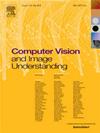A simple but effective vision transformer framework for visible–infrared person re-identification
IF 4.3
3区 计算机科学
Q2 COMPUTER SCIENCE, ARTIFICIAL INTELLIGENCE
引用次数: 0
Abstract
In the context of visible–infrared person re-identification (VI-ReID), the acquisition of a robust visual representation is paramount. Existing approaches predominantly rely on convolutional neural networks (CNNs), which are guided by intricately designed loss functions to extract features. In contrast, the vision transformer (ViT), a potent visual backbone, has often yielded subpar results in VI-ReID. We contend that the prevailing training methodologies and insights derived from CNNs do not seamlessly apply to ViT, leading to the underutilization of its potential in VI-ReID. One notable limitation is ViT’s appetite for extensive data, exemplified by the JFT-300M dataset, to surpass CNNs. Consequently, ViT struggles to transfer its knowledge from visible to infrared images due to inadequate training data. Even the largest available dataset, SYSU-MM01, proves insufficient for ViT to glean a robust representation of infrared images. This predicament is exacerbated when ViT is trained on the smaller RegDB dataset, where slight data flow modifications drastically affect performance—a stark contrast to CNN behavior. These observations lead us to conjecture that the CNN-inspired paradigm impedes ViT’s progress in VI-ReID. In light of these challenges, we undertake comprehensive ablation studies to shed new light on ViT’s applicability in VI-ReID. We propose a straightforward yet effective framework, named “Idformer”, to train a high-performing ViT for VI-ReID. Idformer serves as a robust baseline that can be further enhanced with carefully designed techniques akin to those used for CNNs. Remarkably, our method attains competitive results even in the absence of auxiliary information, achieving 78.58%/76.99% Rank-1/mAP on the SYSU-MM01 dataset, as well as 96.82%/91.83% Rank-1/mAP on the RegDB dataset. The code will be made publicly accessible.
用于可见光-红外线人员再识别的简单而有效的视觉转换器框架
在可见光-红外人员再识别(VI-ReID)中,获取可靠的视觉表征至关重要。现有的方法主要依赖卷积神经网络(CNN),该网络通过精心设计的损失函数来提取特征。与此相反,视觉转换器(ViT)作为一种强大的视觉骨干,在 VI-ReID 中却往往效果不佳。我们认为,从 CNN 中得出的主流训练方法和见解并不能完美地应用于 ViT,导致其在 VI-ReID 中的潜力未得到充分利用。一个值得注意的局限是,ViT 需要大量数据(以 JFT-300M 数据集为例)才能超越 CNN。因此,由于训练数据不足,ViT 难以将其知识从可见光图像转移到红外图像。即使是最大的可用数据集 SYSU-MM01,也不足以让 ViT 对红外图像进行稳健的表示。在较小的 RegDB 数据集上训练 ViT 时,这种困境更加严重,数据流的微小修改都会极大地影响性能--这与 CNN 的行为形成了鲜明对比。这些观察结果让我们猜测,CNN 启发的模式阻碍了 ViT 在 VI-ReID 领域的进展。鉴于这些挑战,我们开展了全面的消融研究,以揭示 ViT 在 VI-ReID 中的适用性。我们提出了一个简单而有效的框架,名为 "Idformer",用于为 VI-ReID 训练高性能 ViT。Idformer 是一个稳健的基线,可以通过精心设计的技术(类似于用于 CNN 的技术)进一步增强。值得注意的是,即使在没有辅助信息的情况下,我们的方法也能获得有竞争力的结果,在 SYSU-MM01 数据集上实现了 78.58%/76.99% 的排名-1/mAP,在 RegDB 数据集上实现了 96.82%/91.83% 的排名-1/mAP。代码将向公众开放。
本文章由计算机程序翻译,如有差异,请以英文原文为准。
求助全文
约1分钟内获得全文
求助全文
来源期刊

Computer Vision and Image Understanding
工程技术-工程:电子与电气
CiteScore
7.80
自引率
4.40%
发文量
112
审稿时长
79 days
期刊介绍:
The central focus of this journal is the computer analysis of pictorial information. Computer Vision and Image Understanding publishes papers covering all aspects of image analysis from the low-level, iconic processes of early vision to the high-level, symbolic processes of recognition and interpretation. A wide range of topics in the image understanding area is covered, including papers offering insights that differ from predominant views.
Research Areas Include:
• Theory
• Early vision
• Data structures and representations
• Shape
• Range
• Motion
• Matching and recognition
• Architecture and languages
• Vision systems
 求助内容:
求助内容: 应助结果提醒方式:
应助结果提醒方式:


